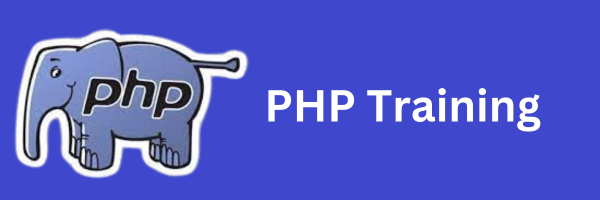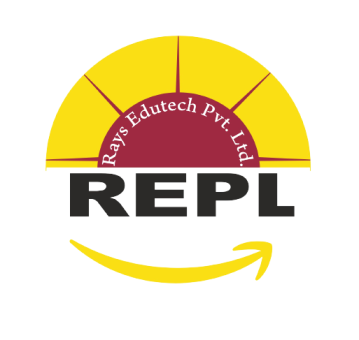PHP Training PHP (Hypertext Preprocessor) is a widely-used open-source scripting language that is primarily designed for web development. It is a server-side scripting language, which means it is executed on the server and generates HTML or other output to be sent to the client's web browser. PHP is embedded directly within HTML code, allowing developers to mix PHP code with HTML markup seamlessly.
Where it is used? WHY REPL?
Life time validity (enroll one time and revise many times)
Interaction with the best faculty and Industry Experts
Small Batches to focus on each student
We focus on both theoretical and practical approaches in a parallel way.
You will be given the opportunity to work on a live project.
Outdoor activities to boost your confidence.
Presentation in class by the students.
Our Key Features:
Good Quality Material Notes
Smart Classes Available
Online Test
Chapter wise Assignments
Offline And Online Classes
Recorded class on Rays App
Eminent faculties of the IT Industry( Amazon, Wal-Mart, Oracle, Microsoft..)
Fully AC and Wi-Fi Campus.
Syllabus
PHP Training
Introduction & Installation
History of PHP
Configuration & installation
Area of PHP
Scope of PHP
How to run the PHP
Introduction of IIS and Installation of IIS.
Runtime configuration
Comparing the PHP and other language
How to use and learn the PHP
Editors in PHP
Dreamweaver
Notepad
Notepad++
PHP development tools
Zend studio
First program as “Hello World”
Explore some details
How PHP code works
How online PHP program run
What is TCP/IP
The http protocol
Basic concept of PHP programming
Commenting your code (single & multiple)
Outputting data to the browsers
Print()
echo
Printf()
sprintf()
What is html?
How to connect the PHP and html
Html and PHP control and tags
Introduction of CSS and xml
Variable
What is variables
Why need of variables
Types of variables
Declaration of variables
Naming rules in PHP
Data types
Scope of variables
Operators and expressions
What is operator
Types of operator
PHP expressions
Introduction of html
Html tag
The HTML Documents
Create a form and input element
Html form element, html form fields and PHP
PHP and html
Accessing PHP and http data
Predefined variables
Variables in http request and response
Super global arrays
Concept of State
State maintenance
Native session in PHP
Control statement and loops
If-else
Switch Case
While Loop
Do While
For Loop
Array
What is Array
Creating Array
Extracting Array
Initializes the array
Adding and removing array elements
Traversing array
Moving the array
Determine the array size
Sorting arrays
Merging slicing and dissecting arrays
Some useful function
(Key (), current (), next (), prev (), prev (), list (), sort () etc.)
Multi dimensional array
Function
What is Function
Function Types
Invoke the Function
Call by Reference
Call by Value
Default Arguements
Recursive Function
Create own Function
Robust and healthy code
Testing and debugging
Debugging PHP script
Debugging and handling errors in PHP
Form validation
Handling error gracefully
Oops features in PHP
Object cloning
Cloning example
Inheritance , implementing , interface and abstract class
Creating object and class
Create module & class
Error and exception handling in PHP
Object cloning
Cloning example
Inheritance , implementing , interface and abstract class
Creating object and class
Create module & class
Data and time
PHP date and time library
Validating dates
Formatting date
Converting a time to user friendly values
Forms in PHP
PHP and web page
Create a simple form
Use the all controls in creation of the form
Session in PHP
What is session and how they work
Creating PHP session
Creating and destroying session variables
Destroying session
Using sessions to restrict access
Using file based authentication
Encrypting passwords
Setting a time limit on session
Passing information through multi page form
Manage the file in PHP
Reading a file with fopen()
Replacing content with fopen()
Appending content with fopen()
Combined read/write operational with fopen()
Moving the internal painter
Checking that PHP has permissions to open a file.
Configuration setting that affect file access
Generating thumbnail images
Checking your servers capabilities
Manipulating images dynamically
Making a smaller copy of an images
Resizing an images automatically an upload
Transferring your test files to a remote server
Introduction of database and MySQl
What is database
Database architecture
Setting MySQl (installation and configuration)
Relational database
Connecting to MySQl From PHP
Basic connection functions
Handling server errors
Creating database and table from MySQl
Alerting tables
Insert data into a table
Retrieving data from MySQl using PHP
Server functions
Retrieving fields
Using PHP to manipulate data in MySQl
Insert records using PHP
Special character
Html special chars()
Updating , deleting records in table
Working in date and time type fields
Enum options and fields defaults
Create a user registration script
Creating a user manager
Creating an acess lagger script
A dynamic image gallery
Storing uploaded files
Creating the database table for image data
Controlling uploaded images with database
Uploading image
Sending images
Managing the blog post images
Automatically loading blog post image
Implementing site search
Creating the search tools
Adding the search form
Handling search request
Querying search request
Displaying the search index
Types of searches
Creating our first map
Creating a new blog manager controller action
Displaying your first goggle map
Managing locations on the map
User registration, login and logout
Adding user registration to the application
Creating the form processor for user registration
Creating the login template
Adding successful and failed login attempts
Dealing with forgotten password
Functions for resetting password adding automatically e-mail functionality
Create the account home page
Allowing users to update their details
:- User authentication, authorization & management
Networking
DNS
Services
Establishing socket connections
Mail
Configuration directives
Sending e-mail using a PHP script
Common networking
Paging a server
Creating a port scanner
Creating a subnet converter
Testing user bandwidth
Create a dynamic form
Create a own website
How to upload file
How to know the domain registration
How to host the own website
How to make the own social networking site




